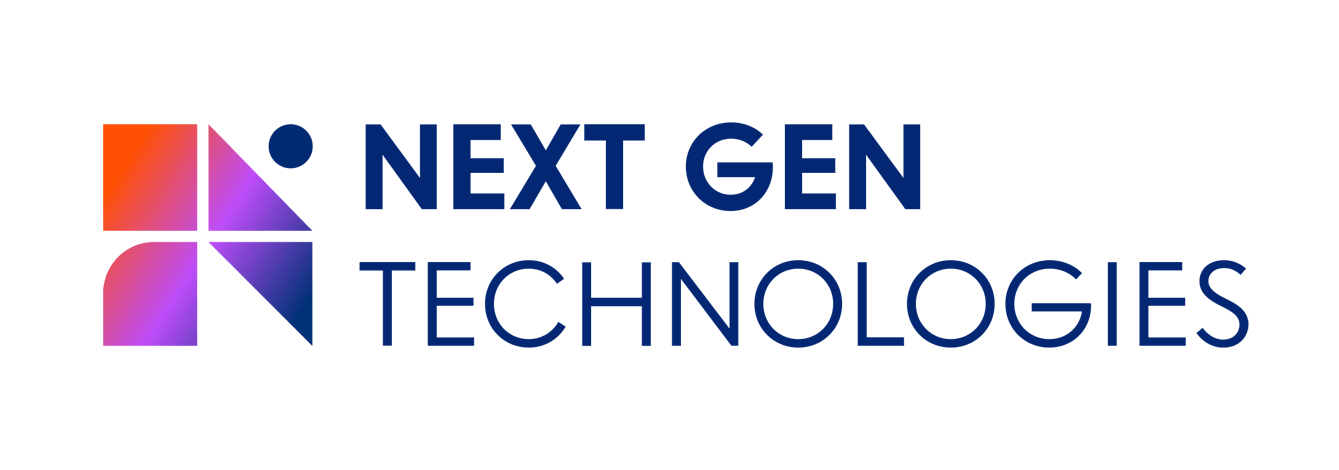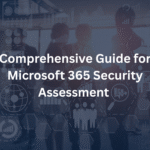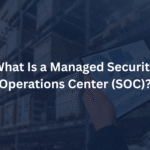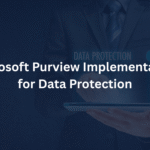As cyber threats become more advanced and persistent, traditional perimeter-based security models are no longer sufficient. The Zero Trust Security model is emerging as the standard for modern cybersecurity, especially in cloud-first and hybrid enterprise environments. At its core, Zero Trust operates on a simple yet powerful principle: “Never trust, always verify.”
Whether you’re a growing enterprise in the UAE or an international organization adopting modern cybersecurity frameworks, Zero Trust offers a future-ready approach to defend your critical assets.
What is Zero Trust Security Model?
The Zero Trust Security model is a cybersecurity framework that assumes no user, device, or system should be trusted by default – even if they are inside the network perimeter.
![]() Unlike traditional models that rely on a secure network boundary, Zero Trust focuses on:
Unlike traditional models that rely on a secure network boundary, Zero Trust focuses on:
- Continuous authentication
- Least-privileged access
- Micro-segmentation
- Real-time monitoring
The core idea is that every access request should be thoroughly verified before being allowed, regardless of where it originates from.
Key Principles of Zero Trust Model
Zero Trust is not a single technology or solution. It is a holistic approach built upon the following principles:
1. Verify Explicitly
Always authenticate and authorize based on all available data points, including user identity, location, device health, and more.
2. Use Least Privileged Access
Grant users the minimum level of access required to perform their duties, reducing lateral movement risks.
3. Assume Breach
Design security systems under the assumption that a breach has already occurred. This proactive mindset helps minimize damage.
4. Micro-Segmentation
Break down your network into smaller zones, each requiring separate authentication, so attackers can’t move freely across the system.
5. Continuous Monitoring and Analytics
Implement real-time visibility, user behavior analytics, and automated threat response to identify suspicious activities promptly.
How Does Zero Trust Security Model Work?
The Zero Trust model uses a combination of identity and access management (IAM), endpoint security, cloud security, and behavior analytics to secure access.
Key Components:
- Identity Verification: Strong MFA (multi-factor authentication) and Single Sign-On (SSO)
- Device Trustworthiness: Devices are continuously monitored for compliance and risk
- Application Access Control: Applications are only accessible through validated gateways
- Data Security: Encryption, data loss prevention (DLP), and real-time access controls
- Network Controls: Software-defined perimeters (SDP), VPN alternatives like ZTNA (Zero Trust Network Access)
Every time a user or device requests access to a resource, the Zero Trust system evaluates the request based on:
- Who is making the request?
- What resource are they trying to access?
- What is the context and risk level?
If the request passes all verification checks, access is granted temporarily never indefinitely.
Benefits of Zero Trust Model
1. Stronger Security Posture
Zero Trust significantly reduces the attack surface by eliminating implicit trust.
2. Improved Compliance
Helps meet regulatory requirements such as GDPR, HIPAA, and ISO 27001 through strict access controls and logging.
3. Enhanced Visibility
Security teams gain deeper insights into user activity, devices, and traffic flows.
4. Better Remote Work Support
With the rise of hybrid and remote workforces, Zero Trust ensures secure access from anywhere.
5. Prevention of Lateral Movement
Even if an attacker breaches one area, they cannot move laterally within your environment.
6. Cost Efficiency
By reducing breaches and enhancing security automation, Zero Trust can ultimately lower long-term security costs.
Challenges in Implementing Zero Trust Security Model
While the Zero Trust approach is highly effective, implementing it is not without challenges:
1. Complexity of Deployment
Integrating Zero Trust into existing systems requires architectural changes and careful planning.
2. Legacy Infrastructure Compatibility
Older systems may not support modern security protocols or identity-based access controls.
3. User Friction
If not designed correctly, repeated authentication prompts can hinder productivity.
4. Resource Intensive
Initial implementation may require investment in new tools, staff training, and cultural change.
5. Change Management
Shifting from a perimeter model to Zero Trust demands stakeholder buy-in, especially in large organizations.
Why is Zero Trust Important?
Cybersecurity threats are evolving at an unprecedented pace. Ransomware attacks, insider threats, cloud misconfigurations, and phishing campaigns have exposed the limitations of perimeter-based security.
According to Gartner, by 2025, 60% of organizations will embrace Zero Trust as a foundational strategy. The UAE’s growing focus on cybersecurity (supported by initiatives from the UAE Cybersecurity Council) makes Zero Trust crucial for public and private sector enterprises.
Zero Trust isn’t just a security improvement, it’s a shift in philosophy that redefines how trust is managed within your digital ecosystem.
Tools and Technologies That Enable Zero Trust
Implementing Zero Trust requires a comprehensive technology stack that spans across identity, device, network, and application security.
1. Identity & Access Management (IAM)
-
- Azure Active Directory
-
- Okta
-
- Ping Identity
2. Multi-Factor Authentication (MFA)
-
- Duo Security
-
- Google Authenticator
-
- Microsoft Authenticator
3. Endpoint Detection & Response (EDR)
-
- CrowdStrike
-
- Sentinel One
-
- Microsoft Defender for Endpoint
4. Zero Trust Network Access (ZTNA)
-
- Zscaler Private Access
-
- Netskope
-
- Palo Alto Prisma Access
5. Security Information and Event Management (SIEM)
-
- Splunk
-
- IBM Q Radar
-
- Microsoft Sentinel
6. Micro segmentation Tools
-
- Illumio
-
- VMware NSX
-
- Cisco Tetration
These tools work together to create a layered defense mechanism that aligns with the Zero Trust architecture.
What are the Five Pillars of CISA’s Zero Trust Maturity Model (ZTMM)?
To help organizations transition to a Zero Trust architecture, the Cybersecurity and Infrastructure Security Agency (CISA) introduced the Zero Trust Maturity Model (ZTMM). It outlines five core pillars that support a secure, identity-driven framework.
1. Identity
This pillar ensures only verified users and services gain access to resources. It includes:
- Multi-factor authentication (MFA)
- Role-based access control (RBAC)
- Context-aware policies
2. Device
Focuses on securing every device that connects to your network.
- Maintain a real-time device inventory
- Enforce device compliance policies
- Use endpoint detection and response (EDR)
3. Network/Environment
This pillar aims to eliminate implicit trust within the network by:
- Applying micro-segmentation
- Using ZTNA instead of VPNs
- Monitoring network traffic and access patterns
4. Application Workloads
Secures all applications and the communication between them.
- Use API security and workload authentication
- Implement runtime protection and secure code deployment
5. Data
Data protection is the final and most crucial pillar.
- Classify and label sensitive data
- Apply encryption and DLP controls
- Enforce access based on data sensitivity and context
CISA also emphasizes a maturity roadmap, moving from Traditional → Initial → Advanced → Optimal stages across each pillar.
Zero Trust vs Traditional Security Models
Traditional network security follows the castle-and-moat approach, where users and devices inside the network are trusted by default, while those outsides are not. This model has fundamental flaws in the modern era of cloud services, mobile access, and remote work.
| Feature | Traditional Security | Zero Trust Security |
| Trust Model | Trust by default inside network | Never trust, always verify |
| Perimeter Focus | Strong at edges, weak inside | No perimeter – context-based trust |
| Remote Access | VPN-heavy, often slow | Secure, identity-based access |
| Response to Breach | Reactive | Proactive, assumes breach |
| User Access | Broad and static | Granular and dynamic |
| Device Trust | Often ignored | Continuously verified |
As you can see, Zero Trust adapts far better to today’s dynamic environments.
Best Practices for Adopting Zero Trust Model
Whether you’re starting your Zero Trust journey or scaling an existing model, the following practices can maximize success:
1. Start with Identity and Access Management (IAM)
Identity is the new perimeter. Begin by enforcing MFA and role-based access.
2. Adopt a Phased Approach
Roll out Zero Trust in stages – starting with high-risk users, applications, or departments.
3. Conduct Network Mapping
Understand how users and devices interact within your network before applying micro-segmentation.
4. Invest in Automation and AI
Use AI-powered analytics to monitor behavior, detect anomalies, and automate threat responses.
5. Integrate with Existing Security Stack
Choose Zero Trust solutions that can integrate with your SIEM, EDR, IAM, and cloud platforms.
6. Regularly Audit and Refine Policies
Continuous evaluation is key. Adapt access policies based on usage patterns and emerging threats.
7. Educate Employees and Stakeholders
Ensure users understand the value and function of Zero Trust to drive adoption.
Conclusion
As cybersecurity threats become more sophisticated and widespread, Zero Trust Security is not just an option, it’s a necessity. It provides a proactive, identity-centric, and risk-aware approach to securing digital assets in 2025 and beyond.
For businesses in the UAE and across the globe, implementing Zero Trust with expert guidance can lead to a more resilient, efficient, and compliant cybersecurity posture.
At Next Gen Technologies, we help enterprises modernize their security framework through tailored Zero Trust solutions – from identity governance to endpoint protection and cloud security. Ready to secure your business with Zero Trust? Contact us today to get started.









